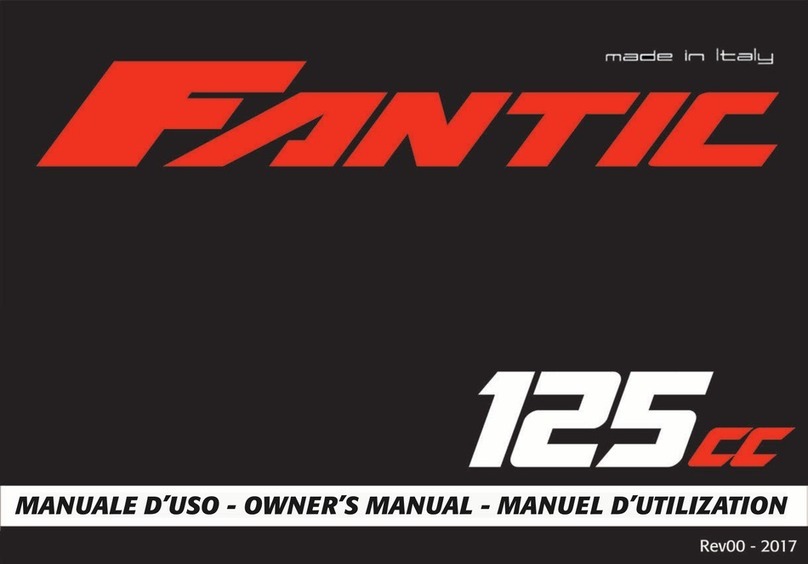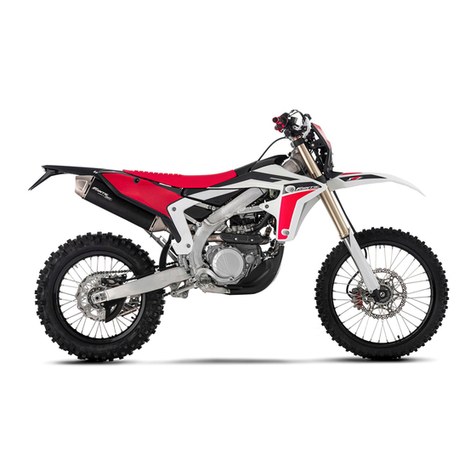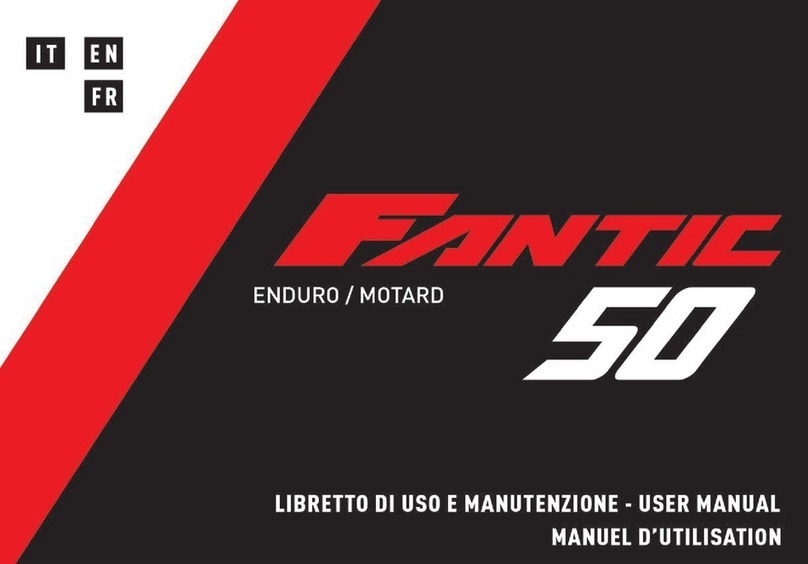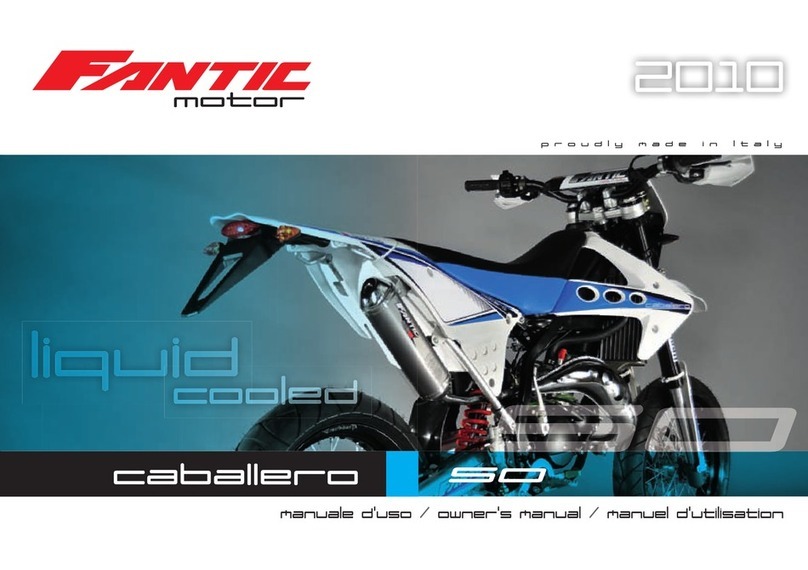5
TABLE OF CONTENTS
Warning...................................................................................................... 2
Foreword ................................................................................................... 3
How to use this manual ....................................................................... 4
Table of contents.................................................................................... 5
Specications........................................................................................... 6
Location of components...................................................................... 8
Side Stand ................................................................................................. 10
Fuel .............................................................................................................. 10
Serial Number.......................................................................................... 12
Homologation Plate .............................................................................. 12
Starting the engine................................................................................ 12
Shifting gears........................................................................................... 13
Stopping the motorcycle..................................................................... 14
Riding during the Break-In Period.................................................... 14
Maintenance Schedule......................................................................... 15
Electronic Ignition.................................................................................. 17
Cooling System ....................................................................................... 17
Spark Plug ................................................................................................. 20
Transmission ............................................................................................ 20
Air Cleaner................................................................................................. 22
Throttle Cable .......................................................................................... 23
Carburetor................................................................................................. 23
Clutch.......................................................................................................... 24
Exhaust System ....................................................................................... 24
Drive Chain Guide.................................................................................. 25
Handlebar ................................................................................................. 27
Brakes ......................................................................................................... 28
Steering...................................................................................................... 29
Steering blockage.................................................................................. 30
Steering plate .......................................................................................... 31
Front Fork.................................................................................................. 32
Rear suspension...................................................................................... 35
Wheels........................................................................................................ 37
Cleaning..................................................................................................... 37
Bolts and nuts tightening.................................................................... 39
Lubrication................................................................................................ 41
Tune-Up (Carburetor and Suspension).......................................... 41
Final recommendatios.......................................................................... 50
Homologation ......................................................................................... 51
Preparation for competition............................................................... 52
Storage....................................................................................................... 53
FANTIC MOTOR Multifunction Instructions .................................. 54
Troubleshooting ..................................................................................... 60
Electric Schemas..................................................................................... 64
Warranty Manual.................................................................................... 66
Fast guide.................................................................................................. 69
Lubricants table ...................................................................................... 70

































